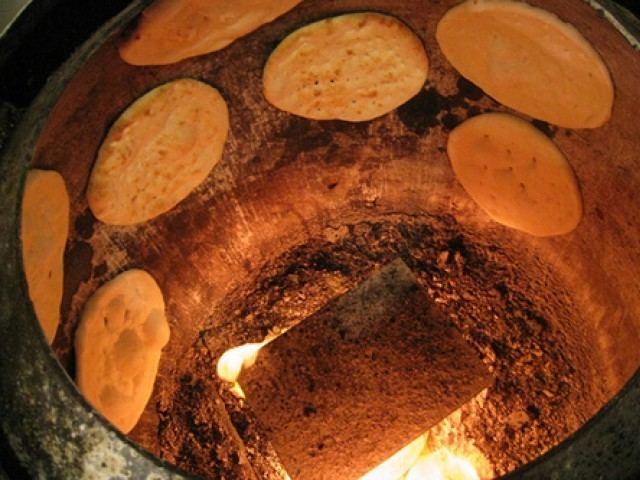 | ||
The term tandoor /tɑːnˈdʊər/ refers to a variety of ovens, the most commonly known is a cylindrical clay or metal oven used in cooking and baking. The tandoor is used for cooking in Southern, Central and Western Asia, as well as in the Caucasus.
Contents
- How to make tandoor oven tee se itse tandooriuuni
- Etymology
- Flatbread
- Peshawari seekh
- Balochi aloo
- Tandoori chicken
- Chicken tikka
- Kalmi kabab
- Samosa
- Afghan tandoor
- Punjabi tandoor
- Armenian tonir
- References
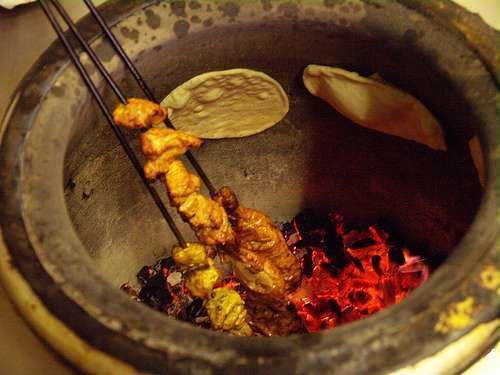
The heat for a tandoor was traditionally generated by a charcoal or wood fire, burning within the tandoor itself, thus exposing the food to live-fire, radiant heat cooking, and hot-air, convection cooking, and smoking by the fat and food juices that drip on to the charcoal. Temperatures in a tandoor can approach 480 °C (900 °F), and it is common for tandoor ovens to remain lit for long periods to maintain the high cooking temperature. The tandoor design is something of a transitional form between a makeshift earth oven and the horizontal-plan masonry oven.
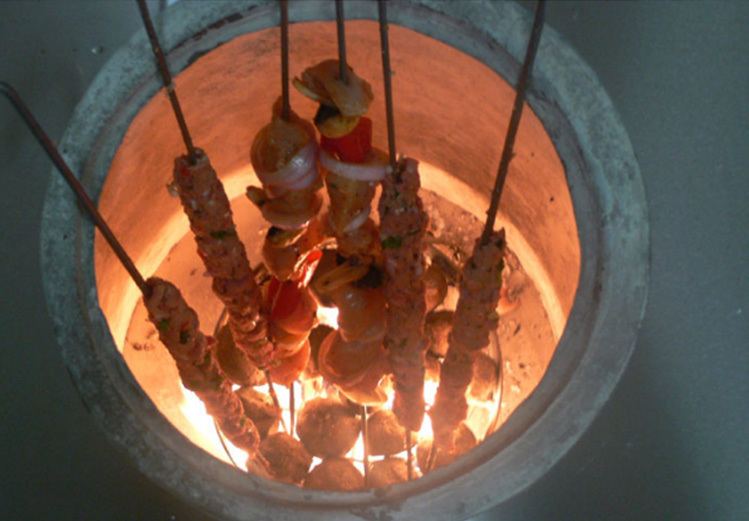
How to make tandoor oven tee se itse tandooriuuni
Etymology

The word tonir is used in various languages like Dari words tandūr and tannūr; these are derived from very similar terms, viz. Persian tanūr (تنور), Armenian t’onir (Թոնիր), Arabic tannūr (تنّور), Hebrew (תנור) e.g. in Leviticus 2:4 Turkish tandır, Uzbek tandir, Azeri təndir and Kurdish tendûr. However, according to Dehkhoda Persian Dictionary, the word originates from Akkadian tinûru "tin" means mud and nuro/nura means fire, and is mentioned as early as in the Akkadian Epic of Gilgames (as reflexed by Avestan tanûra and Pahlavi tanûr). As such, tandoor may have originated from Semitic. In Sanskrit, the tandoor was referred to as kandu. Tandoor’ is also said to have been derived from Persian word ‘Tannur’, derived from Babylonian word ‘tinuru’ based on Semitic word ‘nar’ meaning fire.
Flatbread
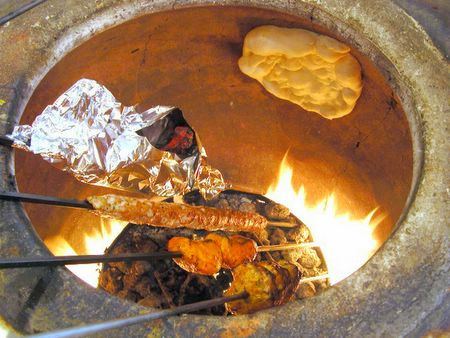
A tandoor may be used to bake many different types of flatbread. Some of the most common are Tandoori Roti, Tandoori Naan, Tandoori Laccha Paratha, Missi Roti, and Tandoori Kulcha.
Peshawari seekh
Roasted cashews, corn and cottage cheese paste marinated in spiced thick cream grilled in Tandoor.
Balochi aloo
Potatoes stuffed with cottage cheese, vegetables and cashew nuts, roasted in Tandoor.
Tandoori chicken
Tandoori chicken is a roasted chicken delicacy that originated in Punjab region of India and Pakistan.
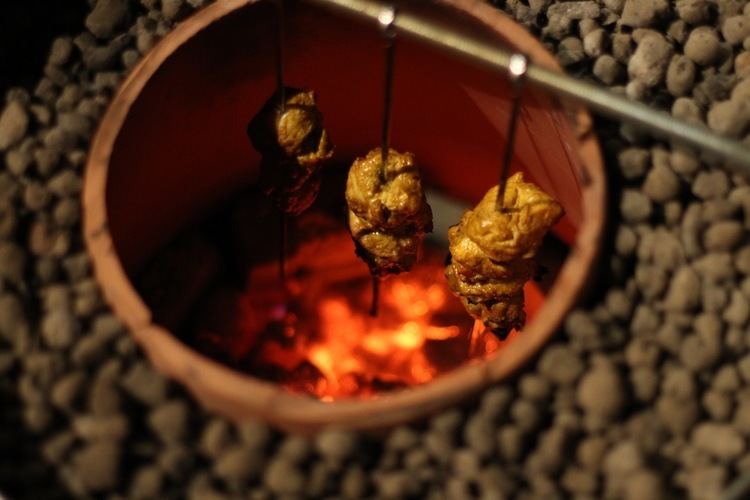
The chicken is marinated in yogurt seasoned with garam masala, garlic, ginger, cumin, cayenne pepper, and other spices depending on the recipe. In hot versions of the dish, cayenne, red chili powder, or other spices give the typical red color; in milder versions, food coloring is used. Turmeric produces a yellow-orange color. It is traditionally cooked at high temperatures in an earthen oven (i.e. tandoor), but can also be prepared on a traditional grill.
Chicken tikka
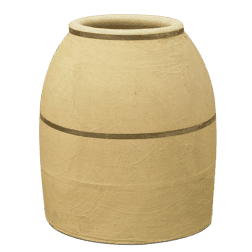
Chicken tikka (Urdu: مرغ تکہ ; Hindi: मुर्ग़ टिक्का; murgh tikka) is a dish from Mughlai cuisine made by grilling small pieces of chicken which have been marinated in spices and yogurt. It is traditionally cooked on skewers in a tandoor and is usually boneless. It is normally served and eaten with a green coriander chutney, or used in preparing the curry chicken tikka masala.
Kalmi kabab
Kalmi kabab, a popular snack in South Asian cuisine, is made by marinating chicken drumsticks and placing them in a tandoor. Various freshly ground spices are added to the yogurt to form a marinade for the chicken. Traditionally, the marinaded chicken is given 12 hours at the least. When prepared, the drumsticks are usually garnished with mint leaves and served with laccha (finely sliced half moons, with a squeeze of lemon and a pinch of salt) onions.
Samosa
Samosa is a stuffed snack consisting of a fried or baked triangular, semilunar or tetrahedral pastry shell with a savory filling, which may include spiced potatoes, onions, peas, coriander, and lentils, or ground lamb or chicken. The size and shape of a samosa, as well as the consistency of the pastry used, can vary considerably. In some regions of Central Asia (i.e. Kazakhstan, Kyrgyzstan, Tajikistan, Turkmenistan and Uzbekistan), samosas are typically baked in a tandoor, while they are usually fried elsewhere.
Afghan tandoor
The Afghan tandoor sits above the ground and is made of bricks.
Punjabi tandoor
The Punjabi tandoor from the Indian Subcontinent is traditionally made of clay and is a bell-shaped oven, which can either be set into the earth and fired with wood or charcoal reaching temperatures of about 480 degrees Celsius (900 Fahrenheit), or rest above the ground. Tandoor cooking is a traditional aspect of Punjabi cuisine in undivided Punjab.
In India and Pakistan, tandoori cooking was traditionally associated with the Punjab, as Punjabis embraced the tandoor on a regional level, and became popular in the mainstream after the 1947 partition when Punjabi Hindus resettled in places such as Delhi. In rural Punjab, it was common to have communal tandoors. Some villages still have a communal tandoor, which was a common sight prior to 1947.
Armenian tonir
In ancient times, the tonir was worshiped by the Armenians as a symbol of the sun in the ground. Armenians made tonirs in resemblance with the setting sun “going into the ground” (the Sun being the main deity). The underground tonir, made of clay, is one of the first tools in Armenian cuisine, as an oven and as a thermal treatment tool. Armenians are said to have originated underground tonirs.
